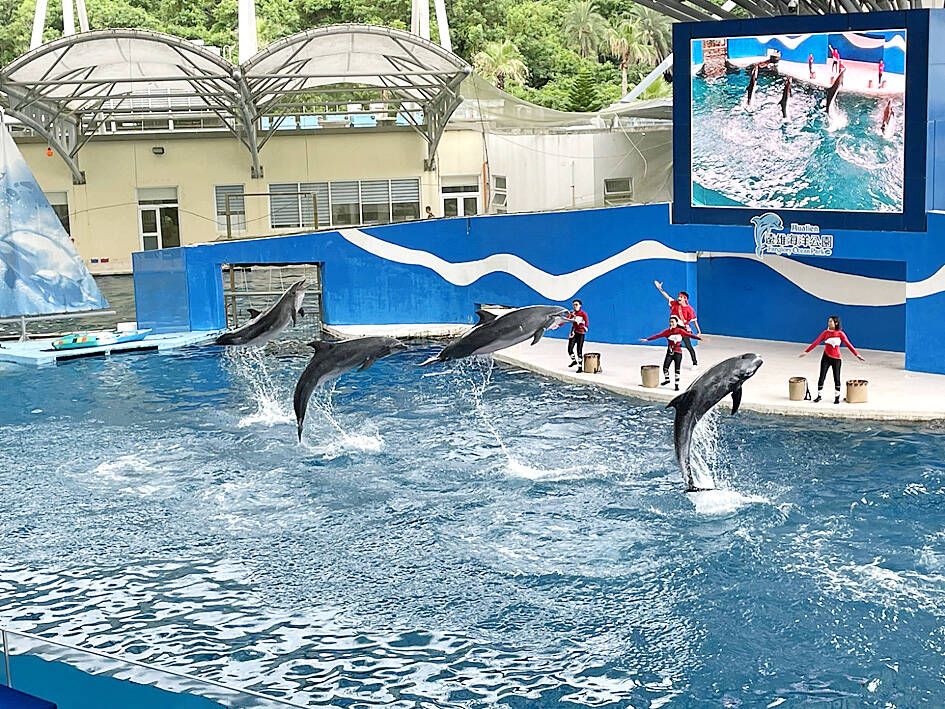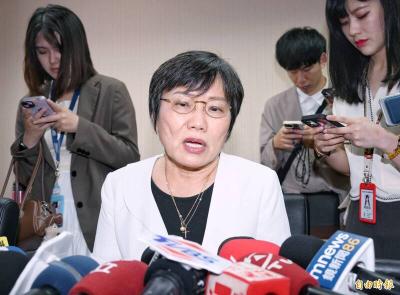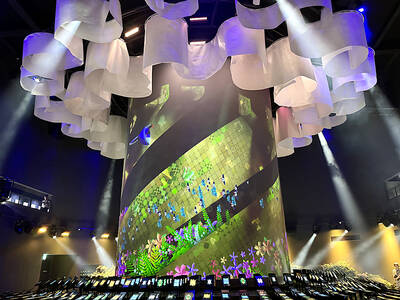Zoos and aquariums are adapting to new measures introduced in July by the Ministry of Agriculture that activists say lack clarity despite representing a step toward banning live shows of protected marine wildlife and terrestrial animals.
The ministry amended measures on animal show management in accordance with the Animal Protection Act (動物保護法) and announced the implementation of the new regulations on July 29 this year.
The new regulations stipulate that additional information about animal exhibitions and shows must be provided to the authorities in advance for permits to be granted. Businesses must now submit information about the exhibition space where animals are displayed, perform or interact with people as well as the places where the animals are kept.

Photo courtesy of Tsai Wei-lin via CNA
The new measures were introduced after animal protection groups criticized Leofoo Village Theme Park in 2022 for allowing visitors to feed ferocious animals such as lions and tigers, saying the park was exploiting protected animals for profit.
On Sept. 26 of the same year, the ministry said that displays of land-based protected wild animals must not involve them in “inappropriate” performances or interactions with people, marking a step toward restricting shows of captive wildlife.
Animal houses must apply for performance or exhibition permits, meaning that the content of exhibitions or shows must be formally approved before their exhibitions or shows can be staged, Department of Animal Welfare deputy director Chen Chung-hsin (陳中興) said.
Two ocean parks in Taiwan are still allowed to hold dolphin shows, but their permits are set to expire in 2026, Chen said, adding that they can file an application for an extension before the expiry of their current permits.
However, some activists say that there is some confusion over the scope of the new regulations and how they interact with other regulations governing animal shows.
While there are stipulations governing the exhibitions of land-based protected wild animals and a ban on animal performances and their interactions with humans, the Ocean Conservation Administration (OCA) has not provided a letter of explanation on its regulations governing such matters, PETA Asia member Sera Lim (林婷憶) said.
She said the ministry’s new regulations is tantamount to announcing that domestic cetacean shows — performances of marine mammals — should come to an end as all cetaceans are protected animals under the Wildlife Conservation Act (野生動物保育法).
Unlike in other countries, the new rules do not directly stipulate the prohibition of exhibitions and shows of protected wild animals, Lim added.
This contrasts with laws in many countries that have already outlawed captive animal performances.
Thirteen countries — Bolivia, Canada, Chile, Costa Rica, Croatia, Cyprus, France, Hungary, India, Kazakhstan, Nicaragua, Slovenia and Switzerland — no longer allow the displays of cetaceans in captivity for entertainment purposes, Kuroshio Ocean Education Foundation Director Tsai Wei-li (蔡偉立) said.
Although Canada and France have captive cetaceans for non-entertainment purposes, their numbers are dwindling. Tsai said, adding that the UK once had 30 facilities that kept cetaceans, but all had ceased operations by 1993.
OCA Deputy Director-General Wu Long-jing (吳龍靜) said they have established a team composed of central and local government officials, experts and animal protection advocates to guide the transformation of protected cetacean shows.
If zoos and aquariums fail to adjust their operations in line with the new regulations, they might have their permits revoked or face punishments according to the Animal Protection Act, Wu said.
Businesses are supported to hold shows of captive wild animals if they meet three criteria, namely, the displays must reflect the wild animals’ natural behavior, have educational significance, and promote an “emotional connection” between the animals and humans, he said.

Chinese Nationalist Party (KMT) Chairman Eric Chu (朱立倫), spokeswoman Yang Chih-yu (楊智伃) and Legislator Hsieh Lung-chieh (謝龍介) would be summoned by police for questioning for leading an illegal assembly on Thursday evening last week, Minister of the Interior Liu Shyh-fang (劉世芳) said today. The three KMT officials led an assembly outside the Taipei City Prosecutors’ Office, a restricted area where public assembly is not allowed, protesting the questioning of several KMT staff and searches of KMT headquarters and offices in a recall petition forgery case. Chu, Yang and Hsieh are all suspected of contravening the Assembly and Parade Act (集會遊行法) by holding

PRAISE: Japanese visitor Takashi Kubota said the Taiwanese temple architecture images showcased in the AI Art Gallery were the most impressive displays he saw Taiwan does not have an official pavilion at the World Expo in Osaka, Japan, because of its diplomatic predicament, but the government-backed Tech World pavilion is drawing interest with its unique recreations of works by Taiwanese artists. The pavilion features an artificial intelligence (AI)-based art gallery showcasing works of famous Taiwanese artists from the Japanese colonial period using innovative technologies. Among its main simulated displays are Eastern gouache paintings by Chen Chin (陳進), Lin Yu-shan (林玉山) and Kuo Hsueh-hu (郭雪湖), who were the three young Taiwanese painters selected for the East Asian Painting exhibition in 1927. Gouache is a water-based

Taiwan would welcome the return of Honduras as a diplomatic ally if its next president decides to make such a move, Minister of Foreign Affairs Lin Chia-lung (林佳龍) said yesterday. “Of course, we would welcome Honduras if they want to restore diplomatic ties with Taiwan after their elections,” Lin said at a meeting of the legislature’s Foreign Affairs and National Defense Committee, when asked to comment on statements made by two of the three Honduran presidential candidates during the presidential campaign in the Central American country. Taiwan is paying close attention to the region as a whole in the wake of a

OFF-TARGET: More than 30,000 participants were expected to take part in the Games next month, but only 6,550 foreign and 19,400 Taiwanese athletes have registered Taipei city councilors yesterday blasted the organizers of next month’s World Masters Games over sudden timetable and venue changes, which they said have caused thousands of participants to back out of the international sporting event, among other organizational issues. They also cited visa delays and political interference by China as reasons many foreign athletes are requesting refunds for the event, to be held from May 17 to 30. Jointly organized by the Taipei and New Taipei City governments, the games have been rocked by numerous controversies since preparations began in 2020. Taipei City Councilor Lin Yen-feng (林延鳳) said yesterday that new measures by